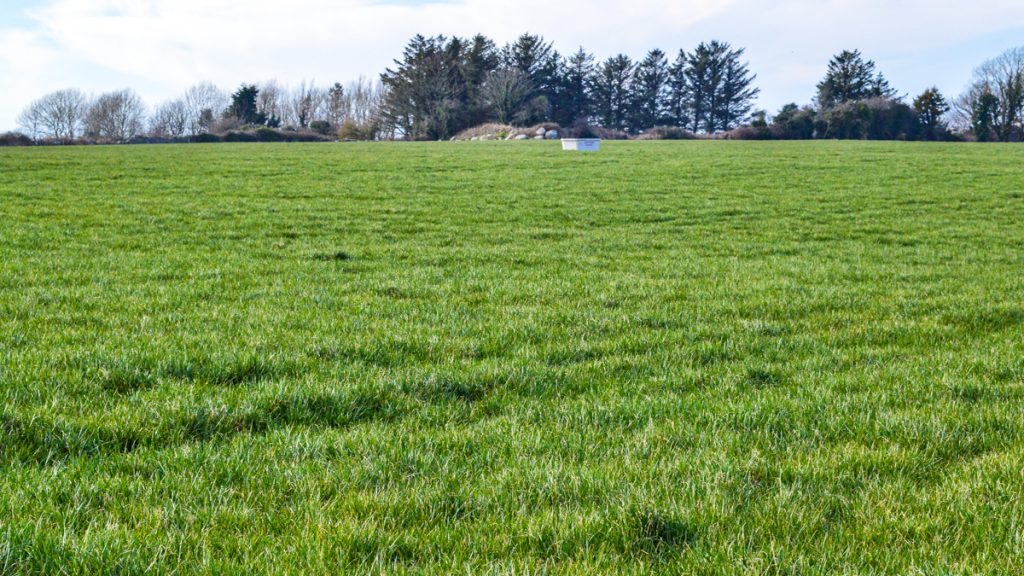Farming in Easkey, Co. Sligo, the Dunphy family have overseen a major expansion of their dairy farm in recent years.
The farm is run and operated by Joseph and Helen Dunphy and their three children – Joseph Jr., Michael and Elizabeth, along with the help of a small team of farm staff.
Expansion
Michael said: ”In 2008, we operated a typical farm business, with the farm being home to a herd of 56 dairy cows, a small beef enterprise and some sheep as well.
”Joseph Jr and myself, now both graduates of UCD’s dairy business degree, were both very interested in dairy farming and so we as a family decided to expand the dairy enterprise.
”The expansion started with the building of a cubicle shed and a 16-unit parlour in 2008, with the aim at the time to get to 130 or 140 cows.
”We milked 120 cows in 2012 and leased a 12ha parcel adjoining us on a 10-year lease. At this time, the beef and sheep enterprises were phased out.
”I suppose a big jump came in 2014 when a neighbour and family friend leased us a 45ha block on a 20-year, long-term lease. We bought maiden heifers to complement the existing dairy stock in our herd.
”The rented block of land was split by a public road so an underpass was constructed – joining the original block and the rented ground, it has simplified the system and has made things so much easier. It was one of the most important capital investments we have made in recent times.
”We now milk in a 50-bail DeLaval rotary parlour that was built in late 2018 and was ready for spring 2019. There were 17 rows going through the old herringbone parlour and it was too much. Cows were standing too long and then walking long distances to grass.
Michael went on to say: ”Where the farm is today wouldn’t be possible without the building of relationships with land owners, contract rears, suppliers, our milk processor and of course our farm staff.
”13 years later, the expansion has halted and we are milking 300 cows.”
Currently
Speaking about the herd, Michael stated: ”We are milking 300 high EBI crossbred cows (€150) on a 95ha milking platform. Last year, the herd produced 480kg of milk solids per cow at 3.88% protein and 4.72% fat, from a concentrate input of 750kg/cow.
”Typically, we would target a meal input of 650kg/cow; but this target was exceeded last year on account of drought conditions seen in the early summer and the wet back end.
”Calving begins in early February and we aim to put cows out to grass as they calve. Last year, we grew 14t/ha and utilised 11.5t/ha; we are aiming to grow 14.5-15t per year.
”We reseed about 10% of the farm each year and are planning on incorporating clover into any new reseeds this year.
Calves
Heifer calves form the backbone of any dairy herd, so it is important that calves receive adequate and high-quality feed. This ensures maximum growth potential and achieves higher weaning weights.
Michael says: ”When calves are born they receive 3L of colostrum and then the cows transition milk for feeds two to six or until three days of age.
”The calves are then fed on whole milk from three days old until they are 10 days old. Calves are then introduced to milk replacer from 10 days old with the aim to feed calves for a total of eight weeks, to achieve weaning weights of 90kg+.”
”After four weeks, calves are then moved onto a once-a-day (OAD) feeding system. When the calves are being switched onto OAD feeding the water volume is reduced for the initial few feeds to get intake to desired levels [750g in 4L].
”We don’t use any kind of calf feeder with the milk replacer being batch mixed by hand and fed through teat feeders / circular feeders.”
Rumen development
The development of calves’ rumen is vital for the calves’ development. Calves should be introduced to a starter ration at an early age, with the Dunphys using Nutrias Calf Crunch ATP introduced with water at seven to 10 days old.
Calves are then transitioned onto Nutrias Calf Grower ATP when intakes increase, with the aim being to get calves consuming as close to 2kg of meal at the onset of OAD feeding and thereafter.
High-quality straw is offered as a fibre source indoors and while at grazing to maintain correct digestion.
Contract rearing
The Dunphys entered a contract rearing agreement in 2017 with Kieran Henry, which has been a very beneficial collaborative arrangement between the family and the contract rearer.
Michael said: “Before, we were trying to manage three groups of animals on the one platform and it was challenging.
”We were trying to manage the milking cows, 70 heifers and 70 calves on one block because the 40ac outside block we have tends to be used for two-cuts of silage.
“Now, the heifers leave the farm as weanlings in November and come back to us at the beginning of the following November, as in-calf heifers.
”The yearling heifers are off the platform, which has allowed us to milk the extra cows and it just takes the burden away of having to rear and breed those heifers.”
More information
The calf feeds (Nutrias Calf Crunch ATP & Nutrias Calf Grower ATP) are 18% CP feeds founded on the fundamentals of rumen development & calf nutrition. More information is available on: www.nutrias.ie.
The Dunphy’s source their Nutrias products from their local Homeland store in Easkey, which is part of the 34 Homeland store network. Products are also available through: www.homeland.ie.





